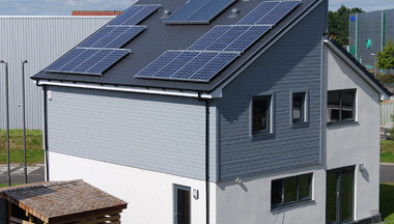Campaign group calls for new PRS tenancy agreements
 A new campaign group is putting forward a framework for Scotland’s private rented sector (PRS) which it said will serve tenants and addresses the country’s chronic lack of housing.
A new campaign group is putting forward a framework for Scotland’s private rented sector (PRS) which it said will serve tenants and addresses the country’s chronic lack of housing.
PRS 4 Scotland is calling for two new tenancy agreements to take account of the flexibility wanted by some tenants and the long term security wanted by others.
Used alongside the existing contract, the campaign group said the new tenancy agreements would tailor conditions to the diverse needs and circumstances of PRS households, whether students, young professionals, families, short term tenants or people relying on housing benefit.
The framework proposes:
Formed by a number of people and businesses who want to see an affordable, strong and well-invested PRS in Scotland, the campaign group aims to unite all sections of the industry, including housing associations, institutions and tenants behind a unique, evidence-based framework as the basis for a distinct Scottish PRS ‘supply and tenure’ model that others can follow.
Based on a robust body of research that evidences what works and what does not work in the PRS, the group said its proposals specifically seek to create a policy environment that encourages supply through tenure agreements that acknowledge the different markets within PRS.
The framework also proposes using tax powers to treat landlords who are committed to long term tenancies as businesses, and a designated ‘PRS planning status’ to encourage housebuilding by putting PRS on a similar planning footing to student accommodation.
Dr John Boyle, an economist and spokesperson for PRS 4 Scotland, said the current ‘one size fits all’ tenancy model does not meet the needs of landlords or tenants.
He said: “Scotland’s PRS should be providing more long-term, stable, high-quality rental options for our growing tenant population, but that aim has been undermined by low levels of house building – a critical lack of supply.
“Yet the current debate around the future of the PRS in Scotland has been focused on calls for rent controls, without sufficient analysis of how these would work in practice to address Scotland’s housing crisis, or recognition of the harm they would do to tenants and landlords in practice.
“What’s needed a holistic supply and tenure model appropriate for Scotland, which addresses the necessity for investment in rental properties as well as the needs of tenants across the income spectrum. Our ‘framework’ offers a basis to do this.”
He added: “There is a great deal of consensus around raising standards in the private rented sector and many of the reforms proposed in the government’s consultation. That said, there is still a danger that the process is knocked off track by a single-minded focus on rent controls. We need to use this opportunity to take account of both tenant and landlord concerns and aspirations and create an innovative and world leading PRS that genuinely answers Scotland’s housing needs.”
There are approximately 330,000 properties within Scotland’s PRS. An estimated 80,000 properties are occupied by families, another 14,000 are HMO licensed providing accommodation for around 60,000 people, with a further 130,000 rented by couples and individuals.









